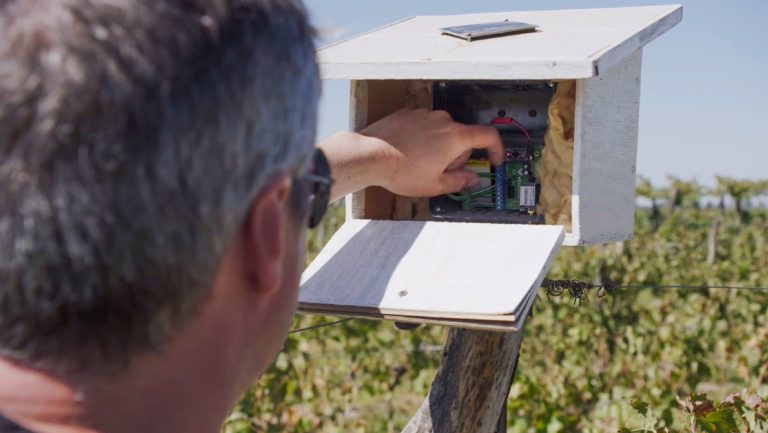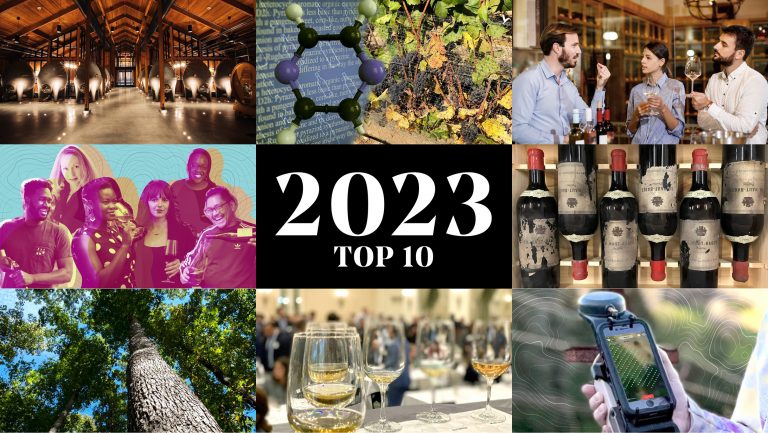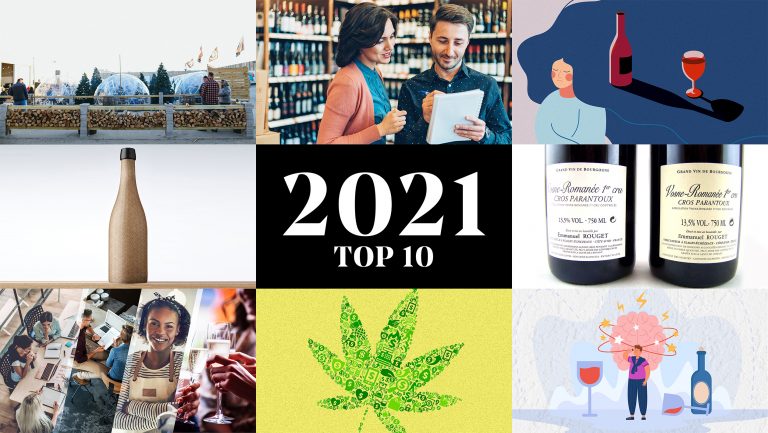Following two decades designing cloud services and datacenters, IT engineer Mike Barrow relocated to Mendoza, Argentina, where he planted Costaflores vineyard and started producing wine in 2007. After several years of traveling to the U.S., Brazil, Spain, and India on business trips and explaining to customers the processes he uses to cultivate his organic wine, Barrow began questioning how wine production could become more transparent to the consumer—a consideration that led him to create the “world’s first open-source, transparent winery and wine-backed cryptocurrency.”
On Sunday, May 6, Barrow’s OpenVino project went live, making Costaflores an open-source winery that will sell its entire 2018 vintage as a wine-backed crypto asset.
An Open-Source Winery
“In a way I think that a winery and datacenter are one in the same,” says Barrow. “In a winery, you want to manage temperature and cleanliness so that interconnected tanks filled with grape juice succumb to yeast and turn into something magical. In a datacenter, you basically manage silos of servers, looking after cooling and environmental hygiene, so that software and code fragments from the internet can ferment into something unexpected.”

Don’t miss the latest drinks industry news and insights. Sign up for our award-winning newsletters and get insider intel, resources, and trends delivered to your inbox every week.
It occurred to Barrow that he could make his wine production data available for all to see, which is what led to his concept of an open-source winery. “An open-source company shares all of its intellectual property and opens the information to the world,” Barrow explains. “So in the case of Costaflores and OpenVino, this means [sharing the] data we’re collecting using sensors and data from the human effort that goes into growing grapes and making, shipping, and selling wine.”
From mid-May onward, live data from the vineyard and winery—collected by temperature sensors, weather stations, on-location cameras, and employee log books—along with the complete financial books of the winery will be publicly available online.
The OpenVino framework, or code, is available for any other winery to adopt or amend, and the open ledger of information being published has already inspired several local collaborations with climatologists and oenologists. OpenVino’s open-source business model is also being used as a case study by digital transformation experts in England’s University of Surrey and the economics department in Spain’s Universidad Católica de Murcia.
“Both traceability and transparency are valuable characteristics in wines, much more than for other food or beverages,” says Barrow. “We can show how the grapes are grown, how the wine is made, how we are treating the environment, and how we are treating the people working in making the product—and be able to communicate that honesty to the consumer in an ethical, transparent business model.”
Using Blockchain Technology in the Wine Industry
In an age when the demand for transparency is increasing, blockchain technology has the potential to revolutionize the wine world. Effectively a public ledger or open database online, the blockchain is visible for all to see, and any amendments to any record can also be seen, making every process fully documented and transparent.
“By using the blockchain you eliminate the need of trust in a third party, which makes systems work more efficiently together,” says blockchain expert and OpenVino consultant Emiliano Velazquez. “By having this open worldwide ledger of information, consumers will be able to see exactly each step of the production chain. I think that in the future, transparency will be the main decision factor in the purchasing process.”
Blockchain technology is already being adopted by some companies and sectors of the wine industry to improve traceability and transparency. Wine fraud expert Maureen Downey has been using the blockchain to prevent counterfeiting; and some wines, such as Italy’s Volpone, have their provenance verified on the blockchain.

A Wine-Backed Crypto Asset
The entire 2018 harvest of Costaflores’ Malbec-Petit Verdot-Cabernet Sauvignon blend is being be sold as a crypto-asset through an Initial Coin Offering (ICO) that launched on May 6. Each bottle of wine produced from the 2018 harvest (16,348 bottles in total) represents one token (ergo 16,348 tokens) and is being sold at cost price—as documented on the blockchain—for U.S.$4.38 per bottle before tax.
“We’ve created a cryptocurrency which equates one-to-one to a bottle of wine,” explains Barrow. “This is because we want the market to decide the ‘correct’ valuation of our wines.”
The tokens will go onto an exchange and token-holders can sell their tokens to other buyers or exchange them for their bottles of wine when it is released from the winery in 2021. The fluctuating value of the wine, or crypto-asset, will be visible online and determined solely by the market.
Since the launch of Bitcoin in 2009, more than 1,500 cryptocurrencies have come to market—and they’ve become known for their turbulent changes in value. While several wine producers and retailers have been accepting cryptocurrencies as payment over the last couple of years, Barrow believes his ICO sale is the first wine-backed crypto asset being released (although there’s a whisky-based cryptocurrency currently in the pipeline in Scotland).
Although releasing a cypto asset sounds novel, he explains that wine can already be considered its own currency. “The cost of wines can span orders of magnitude—from Two-Buck Chuck to $20,000 collection vintages. In other words, a bottle of wine is already a token of value, a glass-bottled bill, if you will, whose value corresponds to the collective fiction we assign to potential future experiences. I think wine is uniquely positioned to become a delicious metaphor for cryptocurrency!”
Is This the Future of Wine Business?
As the digital world becomes more confident with these new technologies, business opportunities in the wine world are just beginning to surface. Barrow for one, is a wine producer that isn’t going to wait in the sidelines, whatever the risks involved.
“Honestly, I know there are risks,” he says candidly, “but it’s so new, so unfathomed, that even I don’t know precisely how this might eventually blow up in my face. We can do this experiment with open-source technologies and tokenize 100 percent of our production with crypto assets because the business is small enough that I am willing to take the risk.
“I remember explaining email to people in 1991. Their initial reaction was, “But I already have a fax machine … and I don’t understand this nonsense you are selling me with the “a” and the circle around it. The same discussion happened four years later with the World Wide Web. These were new technologies that changed the world, yet they were not nearly as intuitive and natural back then as they seem today. Well, today is 1991 all over again with cryptocurrencies and the blockchain. We don’t feel comfortable with these technologies because we haven’t discovered their potential. And I believe that wine, in a weird way, is uniquely poised to be the gateway metaphor to this new value paradigm.”
UPDATE: Some verb tenses in this article were updated after the ICO sale commenced, to reflect that the launch had occurred.

Dispatch
Sign up for our award-winning newsletter
Don’t miss the latest drinks industry news and insights—delivered to your inbox every week.
Amanda Barnes is a British wine writer who since 2009 has been based in South America, where she specializes in the wines and regions of Argentina, Chile, Brazil, and Uruguay and writes the South America Wine Guide. Ever footloose, she is currently on a mission to travel Around the World in 80 Harvests.







